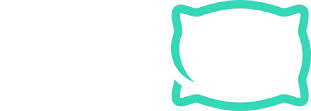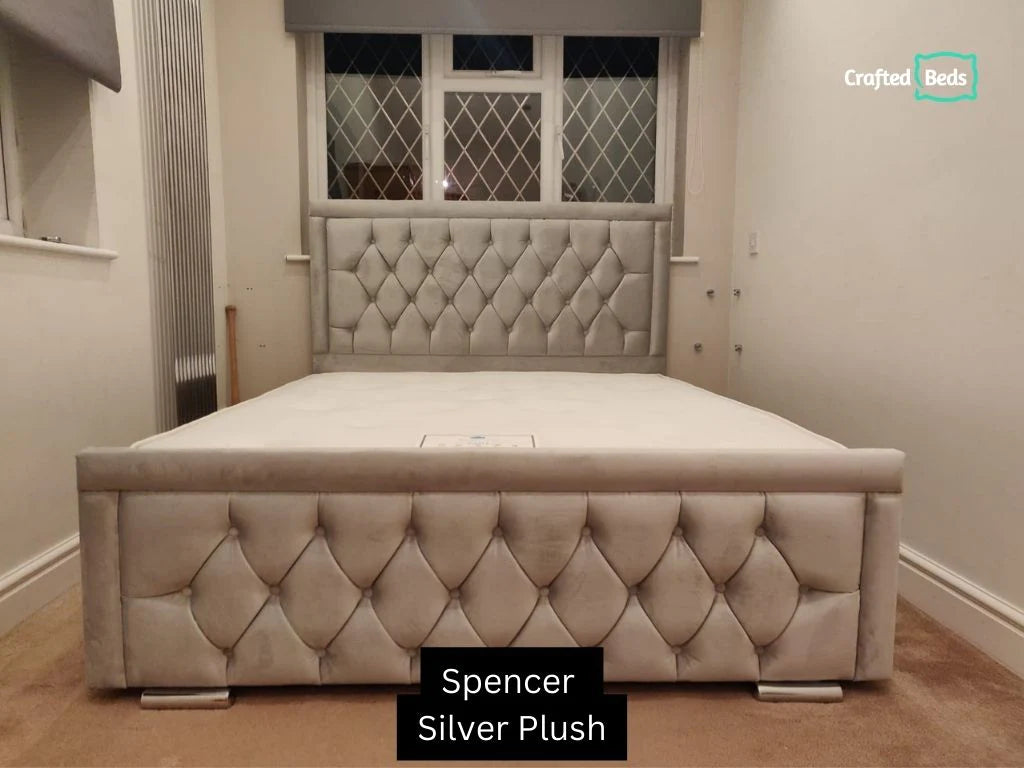What happens when you don't get enough sleep? Are you tired all day long? Or does it only affect certain times of the day? If you answered yes to either question, you might suffer from non-24-hour sleep-wake disorder (N24HSD).
Sleep deprivation has become a common problem today. The average adult spends around 8 hours of sleep each night. It means that they only get 6 hours of rest every 24 hours.
In addition, some people experience insomnia or other sleep disorders. A person who suffers from N24HSD usually experiences fatigue throughout the entire day.
They also tend to be irritable and have trouble concentrating. These symptoms can cause problems at school, work, and even in relationships.
Some people are more susceptible to this condition than others.
For example, those with bipolar disorder often struggle with insomnia. Other factors include age, gender, diet, medications, and stress levels.
In this blog post, we will look into the different types of N24HSD and how to treat them. We will also discuss what causes these conditions and why they occur.
What Is Non-24-Hour Sleep-Wake Disorder?
Non-24-hours (N24) is a sleep disorder characterised by a circadian rhythm when a person's biological clock is not synchronised to a 24-hour day.
Instead of sleeping roughly the same hour every day, people with N24 are likely to find their sleep timing shifting from minutes to hours each day.
They'll sleep earlier and later clock times until their sleep cycles complete the clock. (In sporadic instances, the sleep rhythm can gradually progress instead of stalling.)
The body's hormonal and temperature rhythm cycles are not synchronised to a 24-hour timetable. Attempting to counter this internal rhythm and rest on a routine can result in extreme and prolonged sleep loss.
N24 is found in 55-70% of totally blind people. However, it also occurs in an undetermined number of sighted individuals.

What Are The Symptoms And Signs Of The Nhs?
Since most people have to follow a set timetable for school, work, or other social obligations, the initial signs of N24 that are usually observed are occasional night-time sleepiness and excessive morning sleepiness.
Because of the cyclical nature of this disorder, some patients are likely to experience normality for days to weeks when their body's rhythm is in sync with the social cycle surrounding them.
When an individual's body begins to desynchronize from its rhythms in the dark-light cycle (or the day-night cycle) and the commitments the person with N24 is trying to fulfil, then insomnia and excessive sleeping during the day will return.
The sleep cycle for people with N24 generally is between just over 24 hours (e.g., 24.1 hours) up to 28-30 hours in extreme instances.
The cases of cycles that are less than 24 hours (which are expected to produce an increasing rhythm) are very uncommon.
If you allow yourself to sleep on your cycles, some people who have N24 experience relief from fatigue and insomnia symptoms but at the expense of their ability to keep the schedule necessary for work and social obligations.
However, some individuals with N24 will feel tired, dizzy, and have sleep disturbances regardless of their schedule, perhaps due to the constant desynchronization of their circadian rhythms.
Recent research has shown that, along with the central clock within the brain, almost every cell is equipped with a molecular clock, and some scientists believe that the inability to synchronise with these clocks may be the cause of the symptoms.
If N24 is not recognized and dealt with when a person tries to maintain a 24-hour routine, the signs of sleep deprivation increase, including excessive nighttime sleepiness, fatigue, anxiety, depression, and memory issues.
N24 is a serious issue because it creates extreme difficulties for those trying to fulfill their social and professional obligations.
It is also possible for loneliness and isolation to be caused by being awake at times when others are sleeping.
 What Are The Causes Of N24?
What Are The Causes Of N24?
Here are some of the prominent causes of N24:
Blindness
The most commonly understood reason behind N24 is that it occurs in blind people. People who are blind (no vision) cannot detect the light signals required to adjust their body's internal clock to 24 hours.
When the SCN clock begins to shift away from the 24-hour clock, the person who is blind has no way of bringing it back into sync without medical intervention.
Because the basic cycle of SCN does not always correspond to 24 hours, blind people's circadian timing system can gradually shift over time.
They'll go through a process between sleep periods at night and sleep during the daytime. In most cases, the sleeping rhythm slows down so that the duration is longer than 24 hours.
However, some instances show gradual progress and a shorter period than 24 hours. The duration of the circadian cycle for blind people who have N24 typically falls between 23.8 to 25 hours.
Alterations In Light Sensitivity
For some sighted people, there could be sun sensitivity or lack of sensitivity to the effect of light on the circadian system. The areas that produce vision in the brain and eye may perform well.
However, the distinct cells that carry out the signal from light to create circadian might not.
If they are entirely unresponsive to the effects of circadian light, their state from a perspective of circadian from a purely circadian perspective isn't any different than the blind.
If they're sensitive to light, the light might affect their rhythms but may not be enough to stop circadian drift in their specific lighting conditions.
However, certain patients suffering from the disorder of delayed sleep, which is a result of N24 have also been susceptible to the effect of lighting.
When they are exposed to natural light sources in the evening, it can result in an excessive time delay in the rhythms of their circadian cycle. If this delay continues to accumulate, it will result in N24.
Environment
Light exposure from the outside can also be an essential factor.
When held in a secluded area without any time cues and permitted to switch their lights on and off whenever they wish, healthy people will usually be in a non-24-hour rhythm.
The duration of the rhythm isn't necessarily more prolonged than the standard 24.2-hour period of SCN.
However, it could be as long as twenty-five hours and more. It is because self-selected light exposure later in the day may have delayed effects.
However, this isn't the sole reason behind N24, as light exposure doesn't cause N24 in every person in a non-isolated space.
On the other hand, people with N24 can't maintain a 24-hour schedule, even in a non-isolated setting with typical timing cues.
Hormonal Factors
In certain instances, the hormone melatonin might play a role in forming and perpetuating the N24. Certain patients suffering from N24 are less likely to produce the melatonin they usually do.
It can cause problems because melatonin is a critical ingredient in linking sleep with the night-day cycle. However, excess melatonin could cause issues.
Fluvoxamine, an antidepressant that significantly increases melatonin levels by slowing its metabolism, is believed to trigger DSPD, which is in close relationship with N24.
Specific individuals exhibit an impairment in their capacity to process Melatonin, resulting in higher-than-normal daytime levels that can lead to the circadian clock malfunctioning.
Differences In Cellular Clock Function
Other investigations of the reasons behind circadian rhythm issues have been focused on the cellular clock itself. Studies of healthy subjects have shown a link between the time of the cell clock and the time of entertainment.
People who are awake have a lower clock duration than evening people.
N24 could represent an expansion of the extreme "eveningness" where the cell's rhythm could be too different from the standard 24-hour light exposure to be corrected.
It is referred to as "outside the limits of entertainment." The human biological clock may be assessed in two different ways. One method is to examine the duration of the everyday lifestyle of the subject.
Under these conditions, the time for an average person is all day long.
The time of their sleep-wake cycle is not altered in the course. The person with N24 is by definition to have a sleep cycle more significant than the 24-hour mark and often as long as 25-26 hours.
In normal conditions, it is influenced by external elements, and remarkably light.
However, under certain situations (constant processes and planned desynchronization), scientists can cancel out external influences and discover what's known as the intrinsic time for the timer.
The amount of time that the clock would maintain when it was completely free of any external influence.
The average time of the clock is approximately 24.2 hours. The daily exposure to light can compensate for the 0.2 difference, allowing normal subjects to have it for 24 hours.
How To Diagnose Non-24-hour Sleep-Wake Disorder?
The first recommended diagnosis is maintaining the logs of sleep at home supported by the patient, which indicates a Non 24 hours sleep pattern.
It is typically easier to identify if sleep time is not restricted by work or social obligations.
Confirmation of diagnosis could be confirmed by using an actigraph. It is a wristband that records movement and can be used to determine the duration of sleep.
The actigraph must be worn long enough so that the sleep cycle can finish at least one turn through the day, usually for some time of several weeks.
The documentation of a non-24-hour pattern of melatonin production could be an effective way to confirm the diagnosis, even though this method is most often employed for research.

Clinical Testing And Work-Up
Actigraphy and sleep logs are the primary tools for the initial investigation and follow-up.
The polysomnographic test (a night-time sleep test) is not required to diagnose N24 but could help determine if there are any related conditions.
For polysomnography to be beneficial, it must be conducted when the patient's cycle permits them to go to sleep.
What Are The Recommended Treatments For N24?
The most commonly recommended treatments for non-blind patients require exposure to specific protocols, including light (phototherapy) and darkness (phototherapy).
The most common method of phototherapy is the use of a lightbox. The lightbox is utilised in the early morning hours to regulate your sleep pattern, usually for about 2 hours.
The light treatment should be initiated after the patient's cycle wakes up the patient at the exact wake time. Light is detected by specific cells in the eye's retina that transmit a signal to the brain via the retinohypothalamic tract.
This signal reduces melatonin production and alters the time of sleep. A curve of phase response determines the ideal time to expose light.
The practice of dark therapy (phototherapy) is achieved by avoiding exposure to light late during the daytime.
Even light in the room can cause a delay in the process, so patients should be kept in dim lighting or wear special dark glasses that limit light exposure in the evening and at night.
A combination of dark and light therapy is thought of as more efficient than any. Patients need to continue the treatment if entertainment for a 24-hour cycle is achieved through both dark and light therapy.
Otherwise, the entertainment is lost.
Melatonin, a hormone, can be used to help stabilise the cycle of sleep-wake. Melatonin usually is taken 4 to 6 hours before the desired sleeping time.
While melatonin may be beneficial for blind patients suffering from N24, it's not often effective as the only treatment for sighted patients.
FAQs
Now that you know all about the non-24-hour sleep-wake disorder, let's take a look at a few frequently asked questions.
How Do You Treat Non-24-Hour Sleep-Wake Rhythm Disorder?
While there are a few drugs available for the treatment of non-24-hour sleep-wake rhythm disorder, one of the most commonly used is tasimelteon. Furthermore other treatments include methods of supplementing melatonin.
What Are The Two Major Types Of Sleep/Wake Disorders?
The two major types of sleep/wake disorders that are caused by disorientation of the circadian rhythm are jet lag disorder and shift work disorder. Both of these include excessive sleepiness and continuous tossing and turning throughout the night.
Wrap Up!
All in all there may be more reasons for your reduced sleep quality than you may think. While to some people sleeplessness may be a sign of insomnia, to others it may be the beginning of a sleep disorder. However, experts recommend people with sleep problems to get occasional check ups like sleep studies, just to be on the safe side.
If you’re concerned about your sleep health and the overall effect of sleep on your health, then it’s time to start reading up and increasing your knowledge about sleep related health. And what could be a better source of information than well curated blogs by experts? So check out Crafted Beds for expert recommendations, on point blogs about sleep disorders and tips and tricks to improve your sleep quality!





